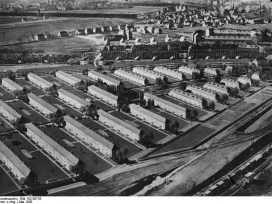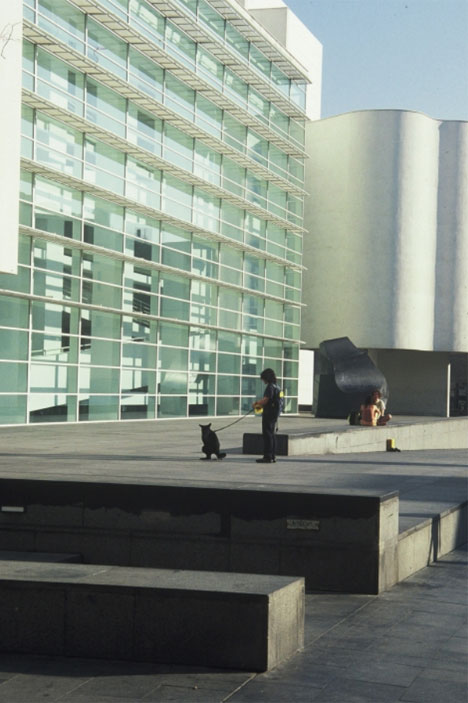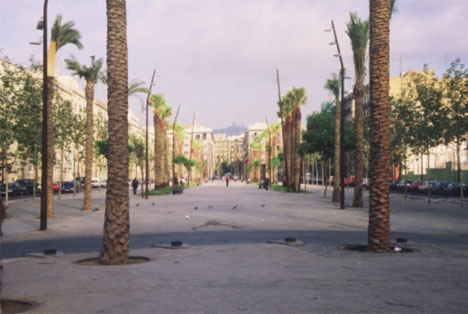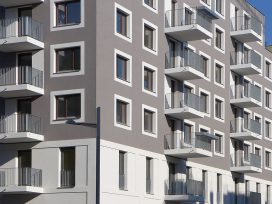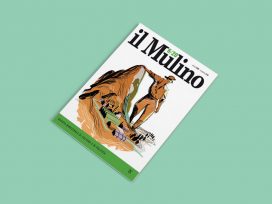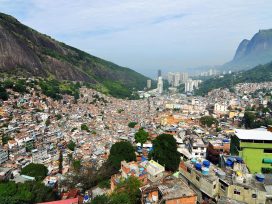Context
In the 1980s, the dominant narrative of urban change in western Europe and North America maintained that culturally-led redevelopment would solve a range of urban problems linked to de-industrialization. As manufacturing was moved to the global South, unemployment rose in the global North, factories became derelict and inner-city areas decayed. At the same time, the de-regulation of commerce shifted the balance of economic control from the state, with its responsibility for public benefit, to the market. In this environment, the cultural (or creative) city, based on a cultural economy, began to replace the city of material production and public institutions, in a proliferation of consumer choice and lifestyle consumption. Gradually, new uses were found for old buildings, often as museums or media hubs. Richard Sennett shows in The Corrosion of Character (1998) that the creativity of the new economy included new, flexible and insecure employment patterns. The lower paid were de-skilled but a new elite of creative problem solvers emerged in the cultural, media, and financial services sectors. These creative types fed new streams of consumerism related to but extending beyond the arts, for instance in designer-bars, designer-labels and designer-lifestyles. As they bought into the self-images purveyed by branded goods and services, the creative class was seen as a force for urban change. On the urban periphery little changed. It was an inverted urban revolution, as the rich rose up to expel the poor to the social, cultural and economic margins.
Culturally-led urban strategies relied largely on selective images of cities rather than on the breadth of experiences and sensory perceptions which would reflect a socially and ethnically diverse urbanism. The model of a cultural city spread from western to eastern Europe after the dismantling of the Berlin Wall in 1989, and is now commonplace in Asia, Australasia and Latin America as well. The cultural city is promoted as a vibrant city where new economic sectors such as media, communications and financial services replace manufacturing, and can also regenerate a city’s spirit. Of course, the spirit of a city is in the mind of the image consultant, but its promotion is intended to attract young professionals with relatively high spending power, who can contribute to economic renewal. The difficulty is that while cultural strategies are said to regenerate inner-city and de-industrialized zones, they are not driven by concern for civic renewal, which implies public benefit, but by economic and commercial motives (higher land values, and so forth), meeting the desires of a new elite. Under the surface, the cultural city is a city of property development, benefiting from de-regulation and a reduction in the scale and scope for state intervention in the city’s image.
As a result, shaping a city’s future is increasingly in the hands of the private sector, or public-private partnerships within a market ethos. Meanwhile, cities compete for investment and cultural tourism as semi-privatized city-states. Branding is key to the process, mapped from product promotion to city promotion and trading on the rapid visual transformations which high-profile arts projects provide. De-industrialized areas are cleared, and city managements encourage an idea of their city as a creative hub or centre of technological innovation, so that their city is an attractive base for the creative class. That class, in turn, colours the images for external perception on which a city’s growth is based, privileging newness and modernization – now a by-word for economic rationalization – over social cohesion or justice. Culture lends the venture a respectable veneer because, in classical and neo-classical thought, culture is attributed universal value: to be cultured is to be civilized. The art collector can pretend to be a Renaissance prince, living in a gated compound and working in a gleaming steel-and-glass corporate fortification, seeing the urban landscape only through the car windscreen.
Two models
Two related but distinct models of culturally-led urban regeneration emerged in the 1990s. In North America, Richard Florida asserted the role of the creative class in driving new urban economies, citing the previous growth of a meritocracy in the sciences and identification of an urban managerial class. Members of the creative class work in sectors ranging from the arts, design and the media to communications, advertising, public relations and financial services. They have the money capital to support lifestyle consumption, and gain cultural capital by visiting art galleries, becoming museum members and collecting contemporary art. As it happens, trading in new art is like trading in derivatives: speculative but potentially bringing a high return if sufficient confidence is conjured in the market. And creative types move into renovated inner-city districts, driving gentrification (Smith, 1996). Florida sees the creative class as internally diverse, however, including not only media professionals and fashion designers but also, citing Paul Fussell, those attracted to cities for creative experiences, and to the new economy because its patterns of organization are non-hierarchic. This seems to update early-twentieth-century ideas of cities as where ties of family and land were broken, and contracts made from common interests (Tonnies, 1955); but the difference is that, for Florida, the creative class not only finds common leisure pursuits but is also instrumental in driving urban growth (whereas workers drawn to manufacturing contributed to but did not drive wealth creation). It is easy to see this when a new art museum is surrounded by new outlets for designer clothes, food and drink. In the metropolis of the 1860s to 1910s, cafés were meeting places for artists, writers and critics, and department stores offered middle-class wives an escape from domestic isolation in suburban villas. That was liberating. But the emphasis in the creative city is on the culture of consumerism, in which identities can be constructed through elite consumption. Art museum previews and events offer one site for the display of creative status, but the rise of a new class of collectors among professionals in financial services and media sectors, for instance, is more influential in shaping the future of a post-industrial city.
Florida defines the creative class, then, as “people [who] engage in creative problem solving, drawing on complex bodies of knowledge to solve specific problems” (2004: 69). They are educated and self-managed, and able to work in teams, or semi-autonomous cells, within a corporate setting. In contrast, and as if to normalize a social division, Florida defines a growing service class of low-skilled, low-paid operatives and care workers, who are not at all self-managing but keep the creative city running by looking after the invisible requirements of the creative class. Many are recent migrants. For Florida, this class “has been created out of economic necessity” (2004: 71) – which de-politicizes the issue in keeping with the ethos of neoliberalism.
The other model, advocated by UK-based arts consultant Charles Landry – in The Creative City – gives more emphasis to arts projects than to arts professionals, following a trend among arts managers to talk up their sector as able to solve unemployment, crime or dereliction. But Landry combines this with a loose version of Florida’s approach, when he asserts (from visits to several European cities),
Successful cities seemed to have some things in common – visionary individuals, creative organizations and a political culture sharing a clarity of purpose. They seemed to follow a determined, not a deterministic path. Leadership was widespread, permeating public, private and voluntary sectors. It expressed itself in courageous public initiatives and often risky business investments, and in a tissue of interconnected projects whether for profit or the public good (2000: 3).
Unlike Florida, Landry gives credit to the voluntary sector; but he also aligns public good and private interest in what he calls courageous initiatives. I suggest this masks a growth in public subsidies for private gains, as when flagship cultural initiatives (with public or lottery funds) drive gentrification.
Permeating his approach, however, Landry seems to retain a European sense of culture as a good thing, so that new art museums indicate a broad, undefined feeling of renewal. I think Landry is poised between culture for itself and the arts as a utility (a means to other ends). There is a danger here of conflating high culture and the culture (in a social science sense) of everyday lives, while attaching a desire for a sense of belonging to heritage culture, an elite domain which reflects the belonging of only the few:
Cultural heritage and contemporary expressions of it have provided a worldwide focus for urban renewal. In the midst of economic development we find inspiration in the buildings, artefacts, traditions, values and skills of the past. Culture helps us to adapt to change by anchoring our sense of being: it shows that we come from somewhere and have a story to tell; it can provide us with confidence and security to face the future. Cultural heritage is more than buildings – it is the panoply of cultural resources that demonstrate that a place is unique and distinctive. (2000: 39)
This merges diverse cultural pasts in a homogenized present. Landry writes of the “weight and significance” which “the presence of the past in the present” can lend a city; but when he says that to erase memories is “throwing an asset away,” he does not say whose memories of what pasts he has in mind. (2000: 266) When he mentions an “ideas bank,” the mapping of the latter term onto the documents of past social formations seems bland. Although he does not cite it, the development of London Docklands is a case of historical erasure: the only reference to a history of labour militancy is a bronze sculpture of three dockers near the Excel exhibition centre: the foreman stands above giving orders, the workers look down. Their faces cannot be seen at eye level, and the whole is an image not of militancy but of conformity.
The redeveloped centre of Birmingham demonstrates the mapping of economic values onto culture on a larger scale. The pedestrianized streets and public squares – Centenary Square and Victoria Square – which were designed in the 1980s and 1990s are filled with sculptures and decorative street furniture. They are well used by office workers and commuters, yet the vibrancy is deceptive: globally commercial rather than grounded in locality. Most of the food outlets are transnational franchises, and the dominant new buildings are a convention centre and an up-market US chain hotel, lending the zone the feeling of a central business district. Birmingham’s nineteenth-century civic buildings watch the spectacle, co-opted to the city’s efforts – reflected in postcards stating City of Culture, a designation the city has not won from the EU or the UK – to find a way out of de-industrialization.
Impacts
The effects of culturally-led urban renewal have been varied. In one way, the inner city has been rehabilitated, if as a gentrified district where the creative class enjoys the frisson of living in sight of areas of deprivation. Hoxton in London demonstrates this, with a mix of new art galleries, gentrified housing (some of it inhabited by successful artists), and post-war estates of social housing that have received only cosmetic improvement. This reverses the post-war trend towards suburbanization, and goes against the post-modern trend to exurbs (Soja, 2000: 233-63); but the aestheticization of urban space re-codes inner cities as elite zones where residual and new migrant-service populations are out of place. In place of centres of governance or public institutions, urban villages and sites of lifestyle consumption set the scene. Where new public spaces are provided, they are surrounded by bars and cafés: all the seats are for consumers.
As stated above, the cultural narrative is a response to de-industrialization. Old industries were unionized and resistant to the erosion of workers’ rights. As immaterial production dominates the image projected in city branding, cities are de-politicized and their futures determined by market forces. Where heritage is used in regeneration, it denotes an artificial optimism which denies areas of possible contestation or overt difference. In new cultural developments, such as the Guggenheim in Bilbao, the gloss is totally to the fore – almost blinding.
The ambition of many such schemes, with flagship cultural institutions and cultural quarters, is to attract cultural tourism. This trades on art and heritage to encourage professionals and business people to visit a city on a weekend break, or to stay on after a business convention or a conference, boosting trade in hotels, restaurants, boutiques and museum shops. All this creates employment, but this is not as positive an impact as it might seem because much of that employment is in low-skilled, low-paid, part-time work in bars and museum catering or security (Loftman and Nevin, 1998). Cultural tourists spend more than beach tourists, nonetheless, and Barcelona’s city authority adopted a policy to encourage cultural tourism in the 1990s (Dodd, 1999), alongside its hosting of the Olympic Games in 1992 (see Degen, 2004). But the policy had two unusual aspects: it was aligned to the building of a Catalan (national not regional) cultural infrastructure, with a new National Auditorium and National Theatre; and, because cultural tourists want authenticity, events in the new venues were advertised only in Catalan. Wanting to be explorers, cultural tourists like to discover the city’s transitional zones. In old bars and narrow alleys, they enjoy the frisson of mixing with artists, sex-workers and migrants. El Raval, the old red-light district, offered such opportunities in Barcelona, but its designation as a cultural quarter formalizes the arrangement, perhaps too much. The new contemporary art museum (MACBA, designed by Richard Meier) is a hub for the creative class (See above, Photo 1).
It is still surrounded by narrow streets overhung with balconies, amid alleys in which old shops and bars continue to serve local publics; yet, through the 2000s, the area took on a gentrified aspect and became less diverse – rents are controlled but renovation has meant higher service charges – so that, while El Raval remains transitional, it no longer feels like a district in an old, Mediterranean port. Where infill apartment blocks have been inserted, they are without balconies, which may seem tangential; but the balconies were a transitional space, neither a public nor a private space but both – a transgression of boundaries. The new facades do not allow this, more reminiscent of northern European cities (where the money is). And there is a New Ramblas (Photo 2), a wide public space – but it connects only narrow streets (in contrast to the old Ramblas, connecting the city centre to the port and well used by locals and visitors). Like public art, public space seems now to be colonized by gentrification.
The outcome, then, of culturally-led urban redevelopment tends to be gentrification through aestheticization and (often needed) renewal of the built environment. David Ley (1996) recognized this in Vancouver, arguing that post-industrial cities and societies saw land uses (especially re-uses) as dominated by the wants of young middle-class professionals – Florida’s creative class – so that gentrification represents, as Lees, Slater and Wyly (2008: 92) summarize from Ley, “a new phase in urban development where consumption factors, taste and a particular aesthetic outlook […] saw an ‘Imagineering of an alternative urbanism to suburbanization’.”
The cultural city, then, houses the creative class in an ambience of affluence and display. It is a city of presentation. In its branded, symbolic economy, even street-life and contestations of space are re-packaged – as in the case of the co-option of graffiti to the art market. I think this demonstrates culture’s soft-policing function, not banning an activity but putting it in a new category where its content is safe. Graffiti was once, depending on viewpoint, a voice for the voiceless, or a plague; now it is a commodity. The creative city rehabilitates the inner city but undoes the consensus of the post-war welfare state in a new barbarity of market forces. While the new elites are separated in their gated compounds from the poor, culture, as Sharon Zukin writes, is a means of control:
Controlling the various cultures of cities suggests the possibility of controlling all sorts of urban ills […]. [T]he cultural power to create an image, to frame a vision, of the city has become more important as publics have become more mobile and diverse, and traditional institutions […] have become less relevant mechanisms expressing identity. Those who create images stamp a collective identity. […] By accepting [these identities] without questioning their representations of urban life, we risk succumbing to a visually seductive, privatized visual culture (1995: 2-3).
Art, Management, and Utility
In the 1980s, the practice of locating art in non-gallery spaces expanded the art market but reflected two other factors: for artists it offered a means to engage wider publics than those who went to galleries, and to refuse the commodity status of art. For administrators it allowed the expansion of art’s public-sector infrastructure, tapping resources from non-art sources in the public sector. For artists, however, the departure from the gallery was brief. The art-world soon reincorporated them into a mainstream in which names were traded in place of objects. For art’s infrastructure, the move outside the gallery coincided with a shift from a model of administration in the public interest – in the UK, as part of the post-war welfare state – to one of arts management. This offered employment in arts institutions and agencies but introduced competition between those who once freely shared ideas. The extent to which arts managers saw the whole public sector as their territory is illustrated by an extract from a report for the National Endowment for the Arts (NEA):
No longer restricted solely to the sanctioned arenas of culture, the arts would be literally suffused throughout the civic structure, finding a home in a variety of community service and economic development activities – from youth programs and crime prevention to job training and race relations – far afield from the traditional aesthetic functions of the arts. This extended role for culture can also be seen in the many new partners that arts organizations have taken on in recent years, with school districts, parks and recreation departments, convention and visitor bureaus, chambers of commerce, and a host of social welfare agencies all serving to highlight the utilitarian aspects of the arts in contemporary society.
George Yúdice quotes this passage in The Expediency of Culture, noting that the expansion of art’s sphere of interest followed a reduction in public subsidy in the US. Utility addressed the need to find new sources of funding, which required a new case for art. Art was no longer a self-evident element of civilization but part of the service sector – far from the autonomous aesthetic pursued by New York critic Clement Greenberg in his 1939 essay “Avant-garde and Kitsch.” Greenberg saw the avant-garde as detached from society, transposing revolution from the state to style. In the late nineteenth century, the Secessions of Berlin, Munich and Vienna refused institutional conservatism. In the 1900s, this became an attack on bourgeois values, as in Dada; but in the 1960s it was an attack merely on the previous art movement. Greenberg writes that
the true […] function of the avant-garde was not to ‘experiment’, but to find a path along which […] to keep culture moving in the midst of ideological confusion and violence. Retiring from public altogether, the avant-garde poet or artist sought […] the expression of an absolute in which all […] contradictions would be either resolved or beside the point. (1986: 18)
There is a yawning gulf between Greenberg’s aesthetic and the NEA’s utility. But there are three further complications.
First, if art abandons autonomy to be reconstructed as utility, it fits into the economic model of a sector. Art is not usually thought of as an industry (yet has producers and consumers) but in this guise art becomes an economic driver in redevelopment, while the art market is a major contributor to the national economy, along with tourism, insurance and financial services. For Yúdice, art’s status as utility follows from the end of the Cold War. He writes that the dismantling of the Berlin Wall in 1989 and the collapse of the Soviet Union in 1991 “pulled the rug out from under a belief in artistic freedom, and with it unconditional support for the arts, as a major marker of difference with respect to the Soviet Union” (2003: 11). He continues,
Art has completely folded into an expanded conception of culture that can solve problems, including job creation. Its purpose is to lend a hand in the reduction of expenditure and at the same time help maintain the level of state intervention for the stability of capitalism. (idem: 12)
Perhaps. But during the Cold War, western art was constructed as a mode of free expression in opposition to socialist realism, the utility of which was to uphold the system. If aesthetic autonomy is replaced by utility, it mimics Soviet culture. Further, in the expanded model of culture which Yúdice mentions, seeming to reference Rosalind Krauss’s essay, “Sculpture in the expanded field” (1979), but possibly using a coincidental turn of phrase, it is not only the boundary between art and social work which comes down but also the boundary between art forms, and between art, design, fashion, architecture and the media. Perhaps, though, it is worth making a short detour into Krauss’s essay.
Reprinted in Hal Foster’s 1983 collection of essays on post-modernism, it established a critical basis for art no longer defined by formal purity but in relation to a plurality of adjacent fields. Art is not-architecture, not-landscape, and so forth. The immediate problem faced by Krauss was how to write seriously about a sculpture by Mary Miss, the form of which was a hole in the ground. The outcome was to chart an expanding territory for art, drawing on a history of sculpture’s departure from the monument with Rodin, and – perhaps unintended by Krauss – to open association with non-art fields. A blurring of the boundaries between art forms is not far from a blurring of the divide between art and culture – between art as taste, and cultures as the shared habits of everyday lives – but is also a conformity with the expansive tendencies of post-industrial business sectors. Perhaps Yúdice has a point, if not exactly the one he makes. The end of the Cold War enabled western art to relinquish its anti-ideological status, and – when the East is part of a single global economic terrain – to become another industrial sector, as if art is not-commerce (which is radically different from not being commerce).
The second complication is that art as utility emphasizes display but not production. Few cities which pursue policies for culturally-led redevelopment provide facilities for artists (Berlin is an exception). The art on which a city trades may be that of the past rather than the present, the result of transnational art collecting. A cultural city does not need art to be produced at all, and artists are merely a postmodern picturesque presence. Art districts such as SoHo in New York, or Hoxton in London, attract the new bohemians (Bohos), but few are artists. However, culture is highly visible, and much less costly than renewing infrastructures. Again, while semblance dominates the city, the outcomes claimed are not always delivered.
There have been successes – notably Glasgow and Barcelona. But there have been failures. In Sheffield, a de-industrialized steel city, a new contemporary music centre designed by Nigel Coates closed when visitor numbers failed to match predictions. It is now used by one of the city’s two universities, its façade inscribed “empowering, enriching, celebrating, involving, entertaining” – a rhetoric read by architectural critic Owen Hatherley (2010: 110) as reminiscent of the Blair regime’s fantasy of Cool Britannia. Hatherley sees much urban redevelopment in this way, an eclectic rag-bag of out-of-context stylistic references: “wavy roofs give variety, mixed materials help avoid drabness, the windswept ‘public realm’ is a concession to civic valour […] [but is] Pseudo-modernism” (ibidem: xiii). Of the ‘Urban Renaissance’ announced by Blair and his friend, the architect Richard Rogers, Hatherley retorts that it was “the very definition of good ideas badly thought out and (mostly) appallingly applied” (ibidem: xv). After the 2008 financial services crisis, that renaissance is over. The new UK government in 2009 saw it as a New Labour project and got rid of it, the education minister declaring that architects (like Rogers) would no longer be paid to design schools (Hatherley, 2011: xv).
Cultural projects are, in any case, less affordable in austerity Europe. In Sheffield, a large hole in the ground occupies a city-centre site where development stopped when the money ran out. This is not uncommon across the UK. The map is being redrawn. Buried deep in the holes which now occupy urban centres is the hope which once characterized modernism; however, the holes are not a result of bombing (as in the 1940s) but of the wild excesses of capitalism.
In this vein, Zygmunt Bauman views globalization as breeding new kinds of insecurity:
Thrown into a vast open sea with no navigation charts and all the marker buoys sunk and barely visible, we have only two choices left: we may rejoice in the breath-taking vistas of new discoveries – or we may tremble out of fear of drowning. One opinion not really realistic is to claim sanctuary in a safe harbour. (1998: 85)
This contrasts with the optimistic certainties of international modernism, and the renewal of humanism in the post-war rebuilding of European cities afflicted by the bombing of civilian areas in the 1940s. Perhaps the Modernist city was a reaction to trauma. After the slaughter of the 1914-1918 war, amid deep social readjustment, international modernism proposed a new society. In the post-1945 period the project was renewed, notably in the UK in the Festival of Britain, a nationwide series of events in 1951 remembered for the Royal Festival Hall. The Festival guide book states:
It will leave behind not just a record of what we have thought of ourselves in 1951, but, in a fair community founded where once there was a slum, in an avenue of trees or in some work of art, a reminder of what we have done to write this single, adventurous year into our national and local history.
In 2011, on its 60th anniversary, a celebration of the Festival was held on the same site. But in 2011, 60 per cent of the space on posters advertising the celebration of the Festival related to places to eat or drink – a festival of consumerism, not national renewal. But I suspect that the idea of a national identity that informed the 1951 event is no longer viable. London today is multicultural in a way not imagined in 1951, implying a cosmopolitanism in which culture bridges different ethnic and interest-based publics; or it may mask a persistent division when culture is used as a mask of cohesiveness. Tim Butler (2003: 2469) writes, “In a city which is massively multi-ethnic, its middle classes, despite long rhetorical flushes in favour of multiculturalism and diversity, huddle together into essentially White settlements in the inner city.”
Similarly, the editors of Cosmopolitan Urbanism comment,
The global practices of gentrifiers […] seem to reflect the attitudes and practices of cosmopolitanism, including an active celebration of […] diversity. However, it may in fact produce an exclusion of difference by drawing symbolic boundaries between acceptable and non-acceptable difference. (Binnie et al., 2006:16)
For Leonie Sandercock, cultural difference is the defining quality of cities now. She writes,
We all grow up in a culturally structured world, are deeply shaped by it, and necessarily view the world from within a specific culture. […] And yet we are capable of critically evaluating our own culture’s beliefs and practices, and of understanding […] those of other cultures. We are capable of imagining and desiring cultural change. (2006:47)
If cultures are always evolving, and tend to hybridity in a world of migrations, cities become key sites of cultural negotiation and contestation of rights to space and visibility. Sandercock observes,
[…] negotiating peaceful intercultural coexistence block by block, neighbourhood by neighbourhood, will become a central preoccupation of citizens as well as urban professionals and politicians. The right to the city is the right of all residents to presence and the right to participate as an equal in public affairs, to be engaged in debating the future of the city and creating new intercultural spaces and built forms. (ibidem: 48)
This goes against the grain of redevelopment, which uses selective pasts fixed in an ersatz historical presence, designed to include some and exclude other publics. Or, for the creative sector, cultural difference is another commodity, de-contextualized like the T-shirts which show Che or Mao long after the 1960s insurrections in which these images first appeared have been forgotten. Even communism can be commodified in the interests of neoliberalism.
The Culture Industry
Culture has been a means of social ordering since the nineteenth century, and enhances the prospects of capital by constructing a society of consumption. To extend the quotation above, Zukin writes that, while culture is a means of control through selective imagery,
With the disappearance of local manufacturing industries and periodic crises in government and finance, culture is more and more the business of cities – the basis of their tourist attractions and their unique, competitive edge. The growth of cultural consumption […] and the industries that cater to it fuels the city’s symbolic economy, its visible ability to produce both symbols and space. (1995: 1-2)
Zukin’s reading of consumer culture mirrors the art market’s colonization of graffiti, too:
Styles that develop on the streets are cycled through mass media […] where, divorced from their social context, they become images of cool. On urban billboards advertising designer perfumes or jeans, they are recycled to the streets, where they become a provocation, breeding imitation and even violence. […] The cacophony of demands for justice is translated into a coherent demand for jeans. (ibid: 9)
But if culturally-led urban regeneration was the strategy of the 1990s and 2000s, presented as improvement on a nineteenth-century model of social ordering, today the regeneration sector seems to have taken the place of culture as the driving force of change. It is much nastier.
Post-crash, the regeneration industry is a threat to communities as estates of social housing on potentially valuable sites are regenerated by private-sector developers seeking to re-code them by expelling residual inhabitants. Of the Heygate Estate in South London: a local Councillor asserts that its tower blocks are “really difficult to maintain”; if it was “a model estate when it was built, it hasn’t stood the test of time”. The architect disagrees: “I don’t think it was […] a failed estate. There are failed estates but this wasn’t one of them […]. There weren’t any problems until relatively recently […]. Councils always go for big-bang, new-built solutions, as opposed to looking after what they’ve got.” The public message is social mixing. Hatherley writes, “Housing associations tell people we’ll pepper-pot you with some stockbrokers and that’ll make everything OK. Then you’ll somehow become more cultured through osmosis” (2011: 10) – but the reality is peripheralization. Nineteenth-century reformism transmutes into modernizing neoliberal brutalism. Heygate is not an isolated case. A resident of another estate targeted for redevelopment says, “We are the wrong sort of people in the right sort of postcode. […] We’re sitting on a golden nugget of land. They’ve never thought for one minute that we’re human beings.” The latest turn in this vile narrative is the emergence of what Naomi Klein calls catastrophe capitalism. Writing after hurricane Sandy, she notes that private-sector interests see opportunities in a reconstruction paid for from public funds. She notes, too, that “upmarket real estate agents are predicting that back-up generators will be the new status symbol with the penthouse and mansion set”. Even more alarmingly, she adds that climate change is seen as “a kind of spa vacation, nothing that the right combination of bespoke services and well-curated accessories can’t overcome”.
A Post-Creative City?
I could end on that gloomy note. But is the story over? Klein says no: it is time for people to resist, rejecting neoliberalism’s de-politicization of society. In Bristol, a cosmopolitan and cultural city in the West of England, the creative class of artists, students and squatters has turned angry. Faced by gentrification, and after months of opposition to the opening of a Tesco supermarket in the Stokes Croft district, the new store was trashed one night in May 2011. A newspaper reported a tense atmosphere after “heavy-handed [police] tactics had provoked a night of violent rioting” while the elected representative for the area was quoted as saying, “‘It’s a very hippyish, counter-culture type of area with lots of arts shops. […] There were two people playing saxophones on top of a bus shelter and a photographer was taking pictures. A police officer walked across and pushed him over’.” The supermarket soon reopened, but wall paintings still attest to opposition. This followed other protests, against student fees, austerity measures, and the tax avoidance of trans-national companies. There are alternative cultural formations, too. In Hamburg, the group Park Fiction successfully opposed plans to privatize a site in an area where artists had squatted several blocks, bringing together diverse local publics to design and produce a park in a waterfront site. Park Fiction has begun working in other cities as well: in Copenhagen, a sign proclaims the cancellation of a bar’s fashion parties, inviting hipsters to move elsewhere (Photo 3).
Another poster advertises sessions to help hipsters come off the drug of fashion. It is easy to criticize such campaigns as marginal, yet they suggest a new alliance between art-work and everyday cultures. Perhaps that is one basis for a post-creative city. Another must now, after the winter of 2011, be Occupy. However ephemeral, and after the short-lived appearance of anti-roads protest in the 1990s, or anti-capitalism in the 2000s, memories of Occupy linger in many cities – there is an alternative to the way things are. I doubt, however, that those who camped in public spaces were as much trying to change state policy as undergoing a more personal, transformative experience – in moments of sudden, spontaneous clarity after which nothing remains exactly the same. This is a new revolution. What forms it will take as austerity pulverizes society and clarity dawns I cannot predict, but it will not go away.
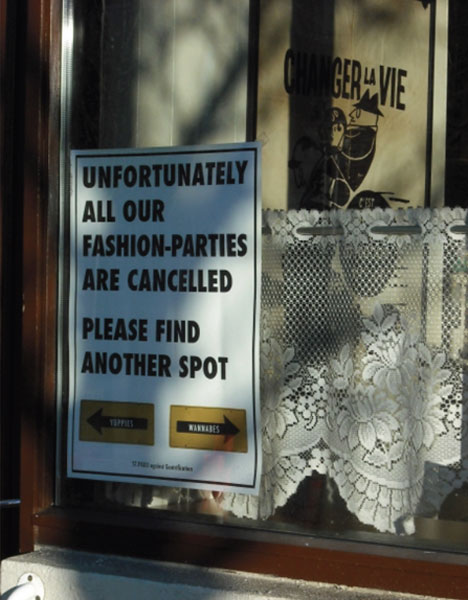
Photo 3: “All our fashion parties are cancelled”, poster by Park Fiction, in a bar in Copenhagen. Photo: Malcolm Miles. Source:RCCS Annual Review 5
Bibliography
Bauman, Zigmunt (1998), Globalization: The Human Consequences, Polity Press.
Binnie, Jon et al. (eds.) (2006), Cosmopolitan Urbanism, Routledge.
Butler, Tim (2003), “Living in the bubble: Gentrification and its others in North London,” Urban Studies 40, 2469-86.
Degen, Monica (2004), “Barcelona’s Games: The Olympics, urban design, and global tourism,” in Mimi Sheller and John Urry (eds.), Tourism Mobilities: Places to Play, Places in Play, Routledge, 131-42.
Dodd, Diane (1999), “Barcelona: The making of a cultural city”, in Diane Dodd and Annemoon van Hemel (eds.), Planning Cultural Tourism in Europe: A Presentation of Theories and Cases, Boekman Foundation, 53-64.
Florida, Richard (2004), The Rise of the Creative Class, Basic Books.
Greenberg, Clement (1986), “Avant-garde and kitsch,” Perceptions and Judgements, 1939-1944, Collected essays and criticism vol. 1, edited by John O’Brian, Chicago University Press (first published in Partisan Review, Fall 1939; republished in Horizon, April 1940].
Hatherley, Owen (2011), A Guide to the New Ruins of Great Britain, Verso.
Hatherley, Owen (2011), A New Kind of Bleak: Journeys Through Urban Britain,
Verso.
Krauss, Rosalind (1983), “Sculpture in the expanded field”, in Hal Foster (ed.), The
Anti-Aesthetic: Essays on Post-Modern Culture, Bay Press, 31-42 (First published in October 8 (Spring, 1979): 30-44).
Landry, Charles (2000), The Creative City: A Toolkit for Urban Innovators, Earthscan.
Yúdice, George (2003), The Expediency of Culture: Uses of Culture in the Global World, Duke University Press.
Lees, Loretta; Slater, Tom; Wyly, Elvin (2008), Gentrification, Routledge.
Ley, David (1996), The New Middle Class and the Remaking of the Central City, Oxford University Press.
Loftman, Patrick; Nevin, Brendan (1998), “Pro-growth local economic development strategies: Civic promotion and local needs in Britain’s second city”, in Tim Hall and Phil Hubbard (eds.), The Entrepreneurial City: Geographies of Politics, Wiley, 129-48.
Sandercock, Leonie (2006), “Cosmopolitan urbanism: A love song to our mongrel cities,” in Jon Binnie et al. (eds.), Cosmopolitan Urbanism, Routledge, 33-52.
Wilson, Elizabeth (2000), Bohemians: The Glamorous Outcasts, I.B. Tauris. Sennett, Richard (1998), The Corrosion of Character: The Personal Consequences of
Work in the New Capitalism, Norton.
Smith, Neil (1996), The New Urban Frontier: Gentrification and the Revanchist City, Routledge.
Soja, Edward (2000), Postmetropolis: Critical Studies of Cities and Regions, Blackwell.
Tönnies, Ferdinand (1955), Community and Association, Routledge.
Zukin, Sharon (1995), The Cultures of Cities, Blackwell.
